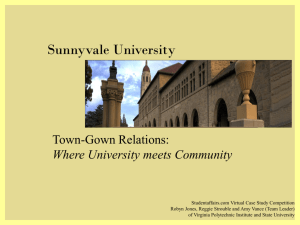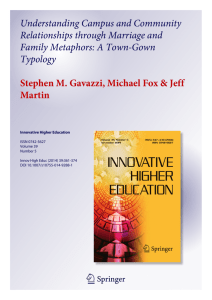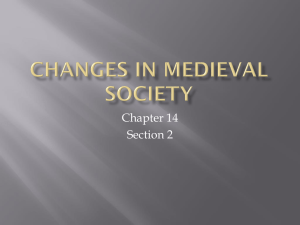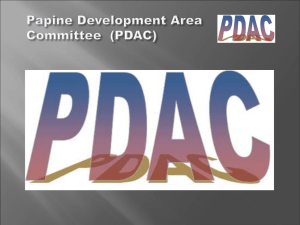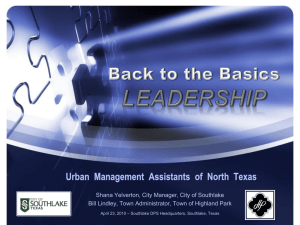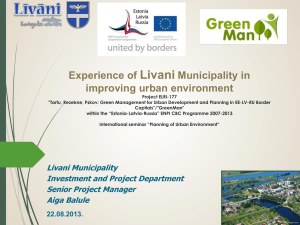Western Kentucky University (hartman)
advertisement
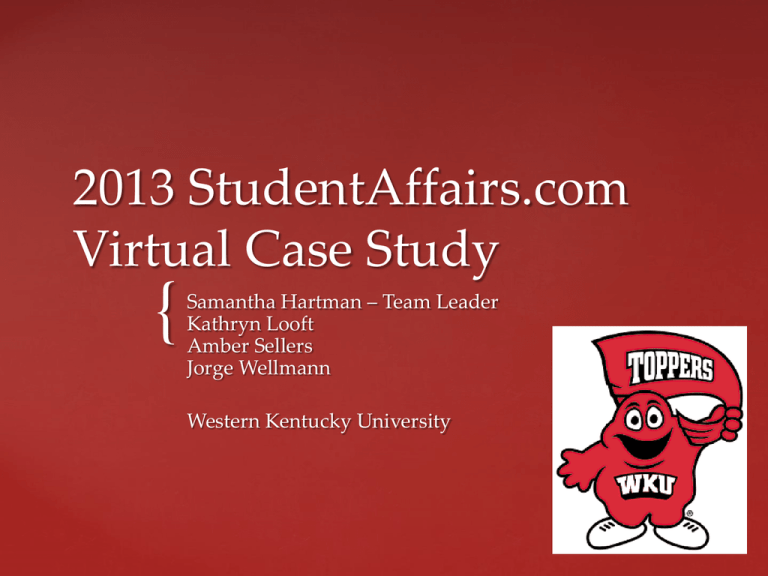
2013 StudentAffairs.com
Virtual Case Study
{
Samantha Hartman – Team Leader
Kathryn Looft
Amber Sellers
Jorge Wellmann
Western Kentucky University
A number of issues are threatening the town-gown relationship
of Sunnyvale University.
Social media has been wholly utilized to bring the issues to the
forefront of the town and University communities.
Articles in the school and local newspapers
Emails sent to students
Discussion in the University Senate
The Mayor/Town Council & President/Board of Trustees of the
school are focused on improving these difficulties, but need help
on what direction to take.
They charge the Dean of Students to assemble a committee in the
goal of formulating a plan of action in three weeks time.
Case Facts
The committee will consist of:
Dean of Students
Director of Residence Life
Director of Student Activities
Seasoned Staff Members
Savvy Administrators
Deputy Mayor
Town-Gown Steering Committee
1.
2.
University is buying townhomes in the community for class
and housing expansion
Torn town-gown relationship
3.
4.
Town not seeing Sunnyvale’s financial importance
University not utilizing the town for student development
Sestercenntenial celebration under scrutiny
Social media contributing to the declining town-gown rapport
Key Issues Identified
1.
Expanding the current town-gown committee to oversee the
University expansion and including community members to ensure a
balanced social equity.
Additional committee members:
2.
Making sure displacement, gentrification, & studentification do not occur
Providing new job opportunities for community members
Maintaining the current town atmosphere
Using sustainable resources/products
Office of Sustainability (University)
Urban and Regional Planning (Town)
University Attorney
Setting guidelines with Residence Life for off-campus housing and
confirming expectations with outside sources.
Areas to consult with:
Office of Judicial Affairs
Town Police Department & University Police Department
Community Members
Proactive & Positive Expansion
Efforts
1.
Get students involved with the community to further student
development
Serving in the community when sanctioned for applicable policy
violations
Volunteer opportunities provided by Office of Volunteerism
Doing community walks with Campus Police
Scholarship Incentives
Recipients are required to do 15 hours of volunteer work per semester to
maintain athletic, academic, or other performance based scholarships
Create competitive scholarship endowments with local business or
organizations. The more a students volunteers at a specific place, the
better their chances of winning a scholarship with that establishment.
Improving Town-Gown
Relationship
2.
Getting the community involved with the University
Participating in Orientation Sessions
Holding a Welcome Back Weekend
Town and businesses partnering with Office of Student Orientation
Involvement Fair where local businesses can showcase themselves
Decorating the town to get students excited
“Door-knocker” program
Hold town-gown galas to celebrate community and University
members that have a great impact on the town-gown relationship
Having community members work side-by-side with students
during volunteer opportunities to initiate them getting to know each
other better.
Improving Town-Gown
Relationship
Benefits of a strong Town-Gown
Relationship
1.
Creating designated areas near the University campus for
student functions and activities
Students, alumni, and community members will be permitted to
partake in “party type” activities, such as alcohol consumption,
tailgating, etc., during large campus-wide events
Areas will be regulated by members of the Office of Judicial Affairs, Local
and University Police, and community members.
Local business will have the opportunity to provide weekly
sponsored activities in an effort to advertise
Students and community members will be asked to follow the
University and community code of conduct during these hectic
celebrations
Celebrating the Sestercentennial
2.
Creating a registration and assessment system
Provides a rough estimate of how many students and alumni will
attend
Town’s Traffic Agency can be contacted to create traffic flow plans
and routes
Allows towns people and business enough time to prepare
3.
Creating a Resource Guide for visitors
Businesses can increase advertising and partnerships
This would include: University Code of Conduct, list of local
businesses, campus and community activities, and a chance for
further advertising
The University’s Office of Public Relations would head this
inititive.
Celebrating the Sestercentennial
1.
2.
3.
Creating video PSAs with Mayor and University President
showing support of the other
Establishing call lines or email addresses for community to
voice concerns or issues
Generating Facebook pages/Twitter feeds for:
4.
Welcome Back Weekend – provide information and increase
excitement
Town Council – voice opinions and ask questions
Town-Gown Committee – voice opinions and ask questions
Sestercenntennial – provide information and increase excitement
Place inserts in newspapers to highlight different areas
Student of the Week in town newspaper
Business Highlights in University newspaper
Utilizing Social Media
Further expansion of the Town-Gown Committee would be
necessary to continually maintain the efforts put in place
Additional members/departments proposed:
1.
2.
3.
4.
5.
6.
7.
8.
Office of Volunteerism
Office of Orientation
Parking & Transportation Services
Alumni Relations
Office of Campus & Community Events
Student Serving on Board of Regents
SGA President/VP serving on Town Council/Town-Gown
Committee
Town Council member serving on Board of Regents
Town-Gown Committee
Expansion Efforts
Expansion of the university is inevitable. By combining the opinions
and efforts of the community with the school, the townspeople will
feel a part of the process instead of feeling as if they are losing their
homes.
Town-Gown Relationship
By having students work side-by-side with townspeople (i.e.
community service) in the community they will not only gain respect
and understanding but will also find a sense of entitlement for taking
care of the community as well. This will ensure that being a part of
the town is important to the students, who will then work to keep it a
nicer environment for all who live there.
Evaluation of Course of Action
Assessment
The University, community, and local businesses can quickly receive
feedback about how the town-gown relationship is managing by
continuing to cooperate with each other throughout this effort.
Business will be able to see the actual revenue gained from various
events and the impact the students have on the town. Authorities
will be able to manipulate various ordinances or systems to meet the
needs of the town and students causing issues off-campus.
Sestercentennial
With continual communication the University can work with the
community to improve the celebration each year and also keep the
wishes of the community in mind.
Evaluation of Course of Action
Student Development
Students who participate in the service-learning initiatives will gain
meaningful exposure to real world issues and have the opportunity to
impact future collaborations between residents and students. They will
also flow through the steps of Perry’s Theory of Intellectual and Ethical
Development (see below).
Students can begin to see how their actions have direct consequences
(when sanctioned) or how can have a meaningful impact on the
community surrounding them.
Economic Impact
Having local businesses get involved with the campus in so many ways
is sure to boost the local economy.
Having students and community members work together on service
projects will not only give the town/organizations a nicer aesthetic, it
will also show citizens the impact that students can have on the larger
community in a positive manner.
Evaluation of Course of Action
"DNR and SPDC Team up to Give Students Real-world Experience." ANR Communications. Michigan State
University, n.d. Web. 19 Feb. 2013.
<http://anrcom.msu.edu/anrcom/news/item/dnr_and_spdc_team_up_to_give_students_real_world_experi
ence>.
Eyler, Janet S., Dwight E. Giles, Jr., Christine M. Stenson, and Charlene J. Gray. "At A Glance: What We
Know about the Effects of Service-learning on College Students, Faculty, Institutions and Communities,
1993-2000: Third Edition." Corporation for National Service (2001): n. pag. Web.
Fox, M.J. (2008.) “Near-Campus Student Housing and the Growth of the Town and Gown
Movement in Canada”. TownGownWorldE-Journal.
<http://www.towngownworld.com/home.htm>
Rauhe, Warren J. "School of Planning, Design & Construction." Small Towns Initiative. Michigan State
University, n.d. Web. 19 Feb. 2013.
"Small Towns Initiative." School of Planning, Design & Construction. Michigan State University, n.d. Web. 19
Feb. 2013. <http://www.spdc.msu.edu/programs/landscape_architecture/small_towns_initiative>.
Smith, Darren (2005) "Studentification: a guide to opportunities, challenges, and practice." Universities
UK Management Guidance.
Sungu-Eryilmaz, Yesim. Town-Gown Collaboration in Land Use and Development. Rep. Lincoln Institute of
Land Policy, n.d. Web. 18 Feb. 2013. <http://www.community-wealth.org/_pdfs/news/recent-articles/1109/report-sungu-eryilmaz.pdf>.
"Town Gown Committee." Office of Off-Campus Community Relations. Appalachian State University, n.d.
Web. 19 Feb. 2013. <http://offcampus.appstate.edu/pagesmith/65>.
"TownGown World-Definitions." TownGown World: Town and Gown University Communities. N.p., n.d. Web.
19 Feb. 2013. <http://www.towngownworld.com/towngownglossary.html>.
Resources

